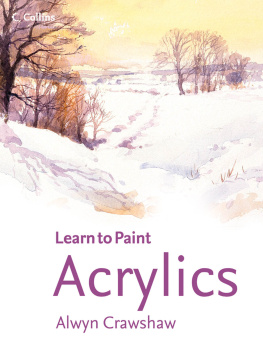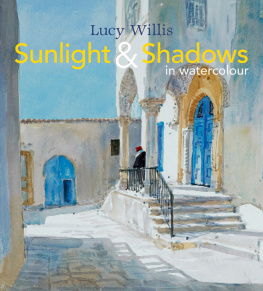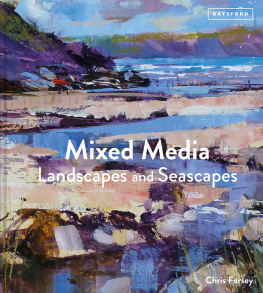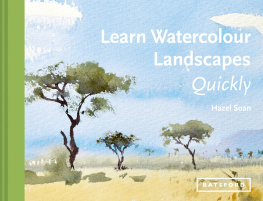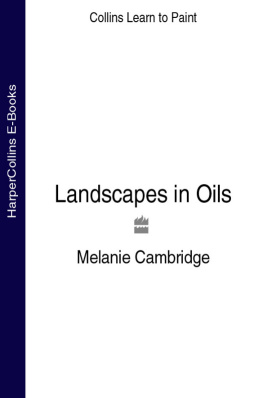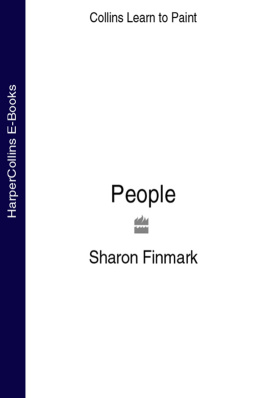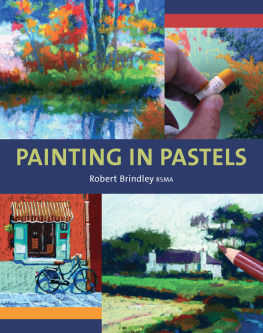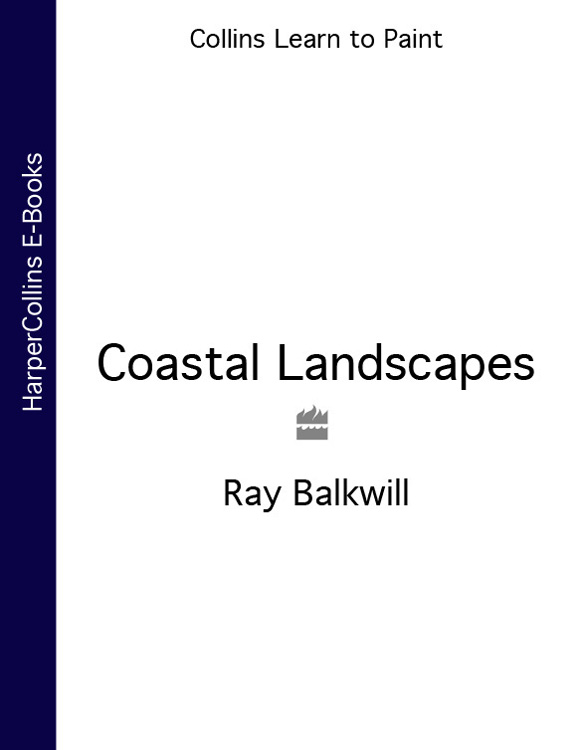In memory of my father-in-law, Terry, who shared my
love of boats and water.

Contents
DEMONSTRATION IN WATERCOLOUR
Sunlit Shallows
DEMONSTRATION IN WATERCOLOUR & PASTEL
Breaking Waves
DEMONSTRATION IN OILS
Sun and Shadows
DEMONSTRATION IN WATERCOLOUR & GOUACHE
Fishing Boats

R ay Balkwill was born in 1948 in Exeter, Devon. He enjoyed drawing from a very early age and making a career in art was always his ambition. However, it was not fine art but graphic design that he first studied at Exeter College of Art. When Ray graduated from college he worked as a designer in advertising agencies, firstly in London and then in the West Country. The turning point came in 1985 when he decided to pick up painting again alongside his main occupation as an art director. Demand for his paintings soon grew and resulted in him turning professional in 1990.
Since then his work has been shown in gallery light inspired this painting of the Exe estuary anies all over the UK, and he has had numerous solo and joint exhibitions. Rays work has also been hung in major open exhibitions including those of the Royal Institute of Painters in Watercolour, the Royal West of England Academy and the South West Academy of Fine and Applied Arts. In 1999 he was elected a member of the St Ives Society of Artists. He holds regular exhibitions in his spacious studio gallery at his home in Exmouth, giving the public an opportunity to view some of his latest work and, from time to time, the work of other invited artists.
Sharing his knowledge
Ray has also built up a considerable reputation as a teacher; he runs painting holidays from his Devon studio, in Cornwall and occasionally overseas. He also gives lectures, demonstrations and workshops to art groups throughout the West Country. Painting can be a solitary occupation, so Ray enjoys sharing his experiences with fellow artists and finds the whole process of teaching necessary and very rewarding.

Ray Balkwill sketching on the Exe estuary.
Ray is a regular contributor to The Artist magazine and his work has also featured in International Artist and Pastel Artist International. He is the author of two books and his work appears in many other publications. An art instruction film of him painting on the Exe estuary has also been made by APV Films. He is a strong advocate of painting en plein air and his main objective is always to capture the mood and spirit of a place. Living as he does on the coast, it is little wonder that the forces of nature and the wide-open spaces of sea and sky have been the mainspring of his art.

Sunlit Water, Topshamwatercolour 35 25 cm (14 10 in)
The soft, hazy light inspired this painting of the Exe estuary and watercolour was the perfect choice for capturing it.

Reflections, Otter Headmixed media 34 47 cm (13 18 in)
In art, expressiveness counts far more than photographic accuracy and working on location rather than in the studio encourages this.
W hether there are thundering windswept waves crashing onto rugged rocks or the reflections of a glorious sunset in a gentle swell, the coastal landscape inspires within me the creative need to capture these emotional moments in paint. I am drawn to water in all its many guises. After all, there are a thousand and one things to stir the imagination: the ever-changing light, boats of all shapes and sizes, big skies, reflections, tide-pools and rusting chains to name but a few. Its not only a visual feast, either the sound of crashing waves, the popping mud on a falling tide, the cries of the gulls and the smell of seaweed combine to make the coast one of the most inspirational subjects to paint.
I believe the starting point for any good painting is to have a passion for the subject. It is about your personal as well as physical relationship with the landscape, which artists call a sense of place. Combine this with keen observational skills and a sound technique and your goal of producing work you are pleased with is in sight. However, there are no shortcuts to painting successful coastal landscapes it starts with sketching, as often as you can. Drawing sets down the ideas and memory of an experience, thinking ahead to the finished painting.
How this book can help
This book covers a variety of my favourite subjects, including seascapes, still water and the reflections within it, skies, estuaries, boats and harbours. The comprehensive materials section covers the drawing and painting materials that I use, including watercolour, gouache, pastels, mixed media and oils. The different ways of approaching subjects are suggested along with examples of the techniques you might use, and the step-by-step demonstrations take you through complete projects to show you the development of a painting from start to finish.
Whatever your level of ability may be, my hope is that through my words and paintings you will find further ideas and inspiration which will help you in the development of your own individual approach to painting coastal landscapes. Of course, learning to paint in a way to express your true self doesnt always come naturally, or immediately. But one thing is certain; your artistic journey will always be an exciting one. Bon voyage!
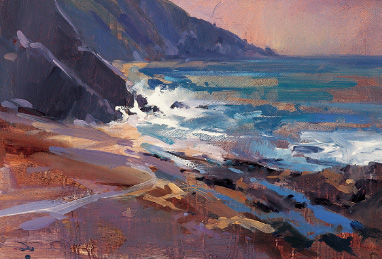
Down to the Bayoils 23 36 cm (9 14 in)
A prepared mid-tone board gave this quick sketch an overall unity by letting the ground colour show through.

Bright Day, St Ivesmixed media 33 45 cm (13 18 in)
Every landscape must be expressed with its own feeling, its own atmosphere and light. St Ives in Cornwall is noted for its clarity of light and it was this that was the inspiration behind the painting.
T he materials you choose will vary depending upon your intentions and you may have already developed your own preferences. However, it is worth considering here the merits of one medium over another. Of course, this is by no means a comprehensive guide, but more my own personal choice of materials and equipment.
Sketching
There is an enormous range of drawing materials available today, from felt-tip and steel-nib dip pens to graphite and water-soluble pencils of all descriptions. It is worth exploring the potential of as many different types as possible. I find solid graphite pencils (2B and 4B) are ideal for drawing and I also enjoy the effects water-soluble watercolour pencils can give, particularly when I want a quick tonal sketch of a sky, for instance.



